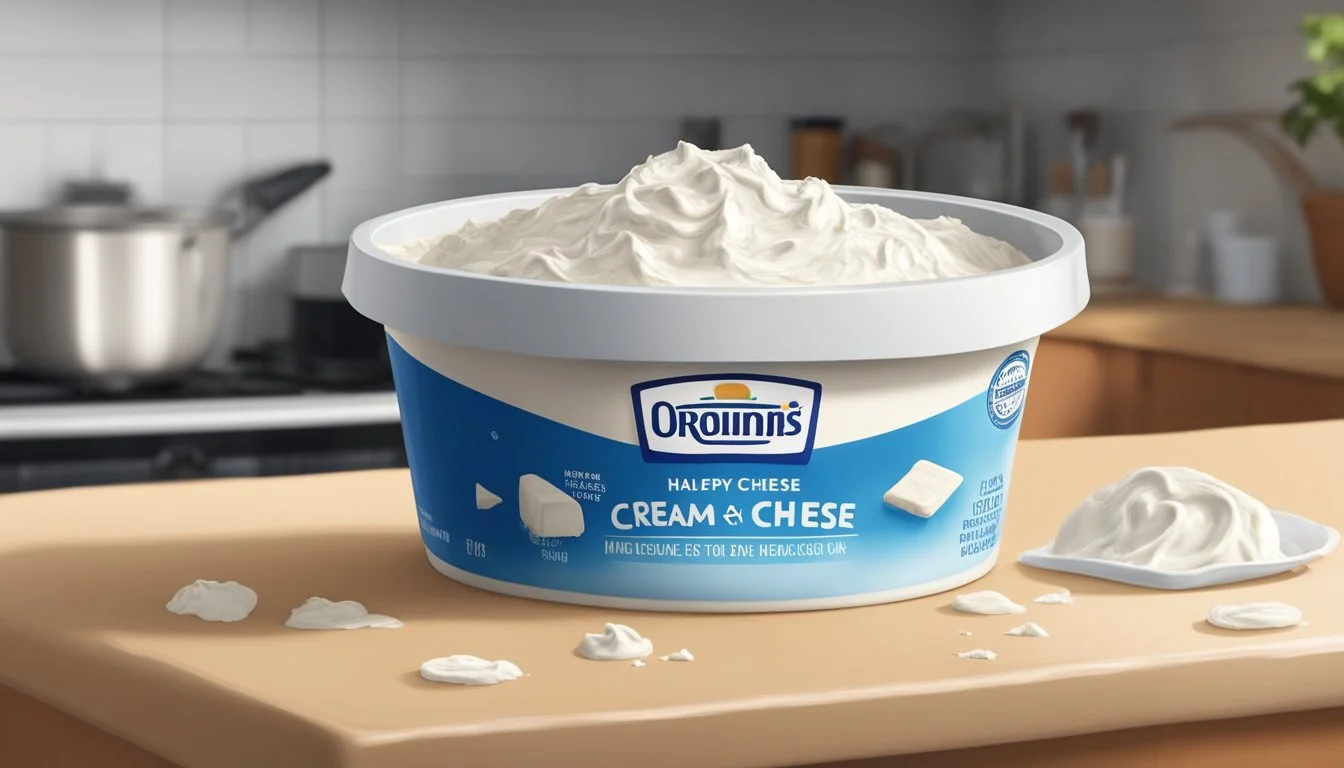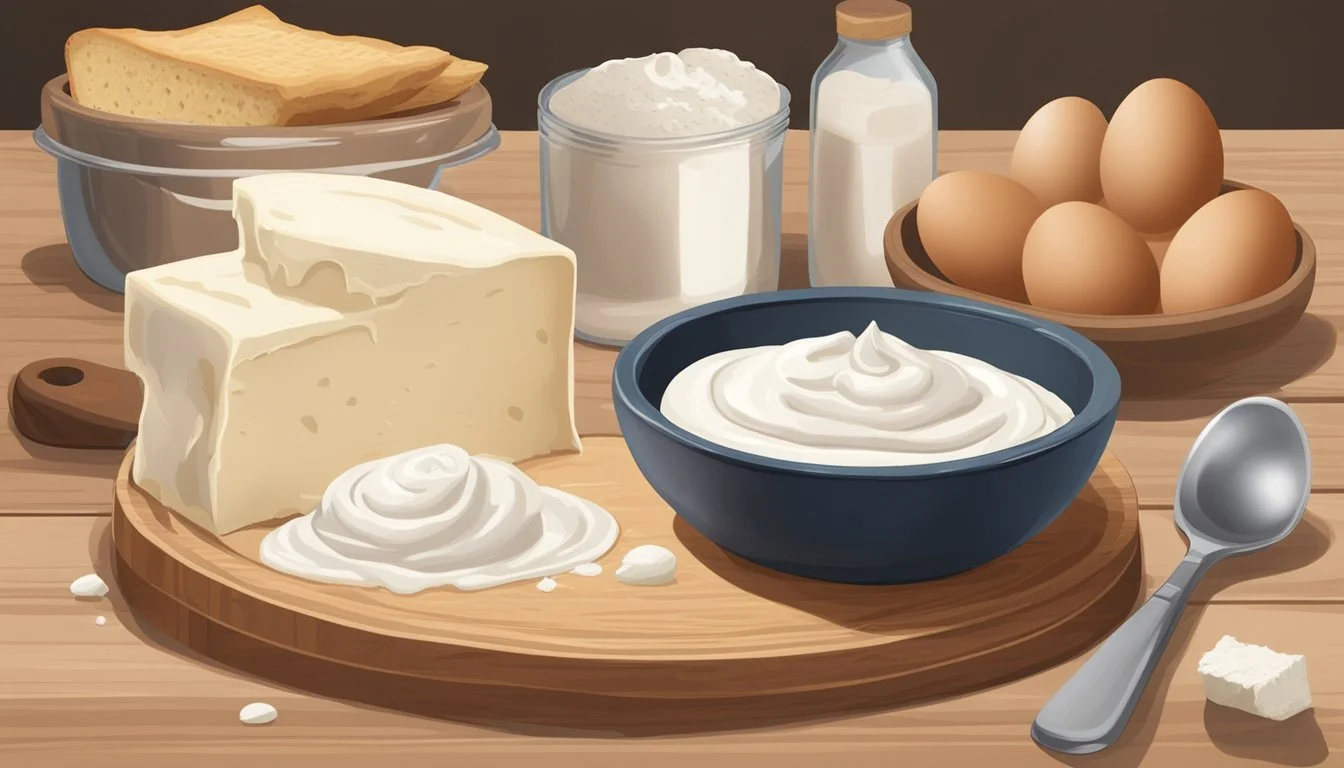Does Cream Cheese Go Bad?
Understanding Shelf Life and Spoilage Signs
Cream cheese, a popular and versatile dairy product, is an essential ingredient in various recipes ranging from frostings to dips and spreads. It's known for its soft, spreadable texture and mildly tangy flavor, making it a favorite for both sweet and savory dishes. Due to its high moisture content and unripened nature, cream cheese (What wine goes well with cheese?) is categorized as a perishable food, and thus, it is prone to spoilage. Consumers often wonder about the shelf life of their cream cheese and how to tell if it has gone bad.
Knowing the spoilage signs of cream cheese is important not only for flavor and texture but also for health reasons, as consuming spoiled cream cheese can lead to foodborne illnesses. The product's longevity depends on various factors including storage methods, whether the package is opened or unopened, and if it has been stored at a consistent, cool temperature.
Understanding Cream Cheese
Cream cheese is a versatile dairy product known for its rich taste and smooth texture, serving as a staple in various culinary contexts. Its quality and shelf life are influenced by types, content, and the use of preservatives.
Types of Cream Cheese
Cream cheese comes in different varieties, each suited for specific uses. The traditional full-fat Philadelphia cream cheese is known for its creamy texture and is a popular choice for spreads and baking. In contrast, reduced fat versions offer a lower-calorie alternative while maintaining a similar flavor profile. Apart from these, there are numerous flavor-infused variants such as herb, garlic, or strawberry, which cater to a diverse range of palates. One can also find alternatives to cream cheese like mascarpone or ricotta, which vary in texture and taste. For those looking beyond cow's milk, cheese alternatives made from plant-based ingredients exist as well.
Type Fat Content Common Uses Full-Fat High Spreads, Baking, Icing Reduced Fat Lower Diet-friendly Spreads Flavor Infused Varying Specialty Dishes Non-Dairy Alternatives None from Dairy Vegan and lactose-free diets
Role of Preservatives and Additives
Preservatives and additives play significant roles in prolonging the shelf life and maintaining the desired quality of cream cheese. These come in various forms, from natural preservatives like salt to synthetic options. Their primary function is to inhibit the growth of mold and bacteria, ensuring that the cream retains its safety and flavor for consumption. In addition, some additives improve the texture, making the cream cheese smoother or affecting its spreadability. Consumers should be aware that while these substances can extend the lifespan of cream cheese, they do not make it immune to spoilage.
Preservatives: Salt, Natamycin (mold inhibitor)
Additives: Stabilizers (guar gum, carob bean gum), Flavorings (for flavored variants)
In conclusion, the understanding of cream cheese as a dairy product is multifaceted, encompassing the diversity of types available, their fat content, and the role of preservatives and additives in maintaining its freshness and quality.
Shelf Life and Expiration
Cream cheese's shelf life varies depending on whether it is unopened or opened and how it is stored. Understanding expiration dates helps determine its freshness.
Interpreting Date Labels
Manufacturers typically print expiration dates, "best by" dates, or use-by dates on cream cheese packaging to inform consumers of the product's peak quality timeframe. The expiration date indicates the last day the cream cheese is expected to maintain its best quality when unopened and stored properly in the refrigerator.
Best by date: Suggests when the product is at its optimal quality.
Use-by date: Often a stronger recommendation for consumption while the product is likely at peak quality.
An unopened package of cream cheese can maintain quality for up to one month past the printed date if refrigerated properly. Once opened, cream cheese should ideally be used within 7 to 10 days for the best taste and safety. After opening, it is the consumer's responsibility to assess the cream cheese's quality before use.
Unopened: Up to 1 month past the expiration date (when refrigerated correctly).
Opened: 7 to 10 days if kept refrigerated.
It's critical to inspect the cream cheese for spoilage signs, such as an off-smell, discoloration, or mold, before consumption regardless of the labeled dates to ensure food safety.
Storage Guidelines
Proper storage is critical for maintaining the quality and safety of cream cheese. By adhering to refrigeration best practices and understanding the methods for freezing, one can extend the shelf life of cream cheese effectively.
Refrigeration Best Practices
When storing cream cheese in the refrigerator, it is essential to keep it in an airtight container or re-seal it in its original packaging with plastic wrap or foil to maintain freshness. An unopened package of cream cheese can typically remain safe for consumption up to three to four weeks past the sell-by date when kept refrigerated at or below 40°F. Once opened, cream cheese should be used within one to two weeks; always store it in the refrigerated section of the fridge, away from the door where temperature fluctuations are most common.
Freezing Cream Cheese
Freezing cream cheese is an option, although it may alter its texture. It is best suited for recipes where texture changes are not crucial, such as in cooked dishes. To freeze cream cheese:
Wrap it tightly in foil or place it in a freezer bag to prevent freezer burn.
The quality is best when used within two months of freezing.
When defrosting frozen cream cheese, transfer it to the refrigerator and allow it to slowly thaw. Some separation may occur; it can often be improved by stirring or by allowing it to reach room temperature before use.
Signs of Spoilage in Cream Cheese
Detecting spoilage in cream cheese is crucial as consuming spoiled cream cheese can lead to foodborne illnesses. The most reliable indicators involve visual, textural, and olfactory assessments.
Visual and Textural Indicators
Observable changes in cream cheese can clearly signal spoilage. Signs to look for include:
Mold Growth: The presence of green, blue, or black spots.
Discoloration: Any yellowing, browning, or pink to orange hues.
Texture Changes: Cream cheese that exhibits dryness, or a crumbly, watery, or slimy texture.
Olfactory and Taste Assessment
The odor of cream cheese is a strong indicator of its condition:
Odor: A sour, pungent, or ammonia-like smell suggests spoilage.
Taste Test: It is not recommended to taste cream cheese to determine spoilage due to health risks, but a sour or tangy taste, distinct from the natural mild tartness of fresh cream cheese, indicates it has gone bad.
By regularly checking these factors, one can confidently determine the safety and quality of their cream cheese.
Handling and Hygiene
When dealing with cream cheese, maintaining good hygiene is crucial to prevent contamination and ensure food safety. Always start with clean hands and use utensils that have been thoroughly washed to avoid introducing bacteria to the product.
Proper Handling Steps:
Wash hands thoroughly with soap and water before touching the cream cheese or any related utensils.
Use a clean knife for cutting or spreading cream cheese; this prevents the transfer of contaminants.
To avoid the risk of bacterial growth, do not leave cream cheese at room temperature for more than two hours.
Avoiding the practice of "double-dipping" is essential. When using cream cheese, especially in a communal setting, one should never double-dip a knife or any other utensil after it has been used for spreading. This could introduce saliva and bacteria back into the cream cheese container, accelerating spoilage and increasing the risk of foodborne illness.
When to Discard Cream Cheese:
If the cream cheese shows signs of mold growth or discoloration, it should be discarded immediately.
Should one detect an off-smell or if the texture feels unusually slimy or dry, it’s best to throw it out.
By following these simple guidelines, the risk of foodborne illness can be mitigated, ensuring that cream cheese remains a safe and enjoyable product.
Health Risks of Consuming Spoiled Cream Cheese
When cream cheese spoils, it can harbor harmful bacteria leading to potential health risks. Consuming such deteriorated products can result in foodborne illnesses with unpleasant and sometimes dangerous symptoms.
Bacterial Growth and Food Poisoning
Spoiled cream cheese is often a breeding ground for bacteria such as Salmonella, E. coli, and Listeria. These pathogens thrive in perishable food items, especially in dairy products that have been improperly stored or kept past their freshness date.
Symptoms of Infection: The ingestion of bacteria-laden cream cheese can lead to:
Nausea
Vomiting
Diarrhea
Abdominal pain
Fever
An individual's risk of severe symptoms escalates if they have a weakened immune system. It's also worth noting that pregnant women, the elderly, and young children are more susceptible to the effects of foodborne pathogens.
Cream Cheese in Recipes
Cream cheese plays a pivotal role in various recipes, contributing to the creamy texture and rich flavor that many desserts and dishes are known for. Its versatility makes it an essential ingredient in kitchens worldwide.
Using Cream Cheese as an Ingredient
When incorporating cream cheese into recipes, chefs value its ability to impart a smooth and creamy consistency. One of the most beloved uses of cream cheese is in cream cheese frosting, which combines the cheese with ingredients like butter and powdered sugar to create a thick, spreadable topping for cakes and cupcakes. The high moisture content of cream cheese ensures that this frosting maintains a luscious texture that enhances the overall dessert experience.
In baking, cream cheese is often added to bread recipes to achieve a moist crumb and a tender finish. Due to its mild, tangy flavor, it can also serve as a substitute for other cheeses or dairy products in cooking. When choosing cream cheese as a substitute, chefs must consider the original ingredient's texture and flavor profile, ensuring that the substitution will not detract from the desired end result.
Cream cheese's versatility extends beyond sweet dishes; it is also a staple in savory recipes such as dips or spreads, where it contributes both flavor and a pleasingly soft texture.
Proper Disposal and Environmental Considerations
When disposing of spoiled cream cheese, individuals should consider the environmental impact of their actions. Cream cheese typically comes in plastic containers, which are recyclable in many regions. However, it is essential to ensure that both the product and the container are dealt with responsibly.
Plastic Containers:
Rinse containers to remove any leftover cream cheese before recycling.
Check local recycling guidelines, as some types may not be recyclable in all areas.
Discarding Cream Cheese:
Spoiled cream cheese should never be poured down the sink as it can contribute to blockages and water pollution.
If a composting option is available, cream cheese can sometimes be composted. However, it is best to check with local composting guidelines as dairy products may attract pests and typically take longer to break down.
Environmental Considerations:
Reduce waste: Purchase only as much cream cheese as needed to minimize spoilage and waste.
Biodegradable Options: Seek out brands that use biodegradable or compostable packaging to lower plastic waste.
Spoiled cream cheese should be treated as any other perishable food product, with mindfulness toward reducing environmental impact. By practicing responsible disposal and recycling, individuals can help to lessen their ecological footprint.
Alternatives and Substitutes for Cream Cheese
When cream cheese is unavailable or unsuitable for dietary needs, one can select from a variety of dairy and non-dairy alternatives. These substitutes can be deployed across a range of recipes, effectively replicating the texture and flavor profile of the original ingredient.
Dairy and Non-Dairy Options
For those seeking dairy alternatives, here are some options:
Thick strained yogurt: This can provide a tangy flavor similar to cream cheese and is suitable for spreads and dips.
Sour cream: Works well in many recipes, though it is less firm.
Neufchâtel cheese: Contains less fat and offers a similar taste and texture.
Mascarpone: Creamier with a sweet note; add lemon juice for a more authentic tang.
Ricotta: Especially good for fillings and has a lighter texture.
Cottage cheese: Blended until smooth, it serves as a lower-fat option.
Fresh goat cheese: Offers a distinctive tangy taste, ideal for spreads.
For non-dairy substitutes, consider the following:
Vegan cream cheese: Made from plant-based ingredients, mimicking the consistency and taste.
Pureed silken or soft tofu: A versatile substitute with a smooth texture, it is good for sauces and desserts.
Nut-based spreads: Such as those made from cashews, which can be seasoned to taste.
For users looking for an alternative to parmesan cheese in recipes that call for cream cheese, neither direct substitute shares the same flavor profile. However, nutritional yeast can be a dairy-free option that adds a cheesy flavor, though it lacks the creaminess of cream cheese.






